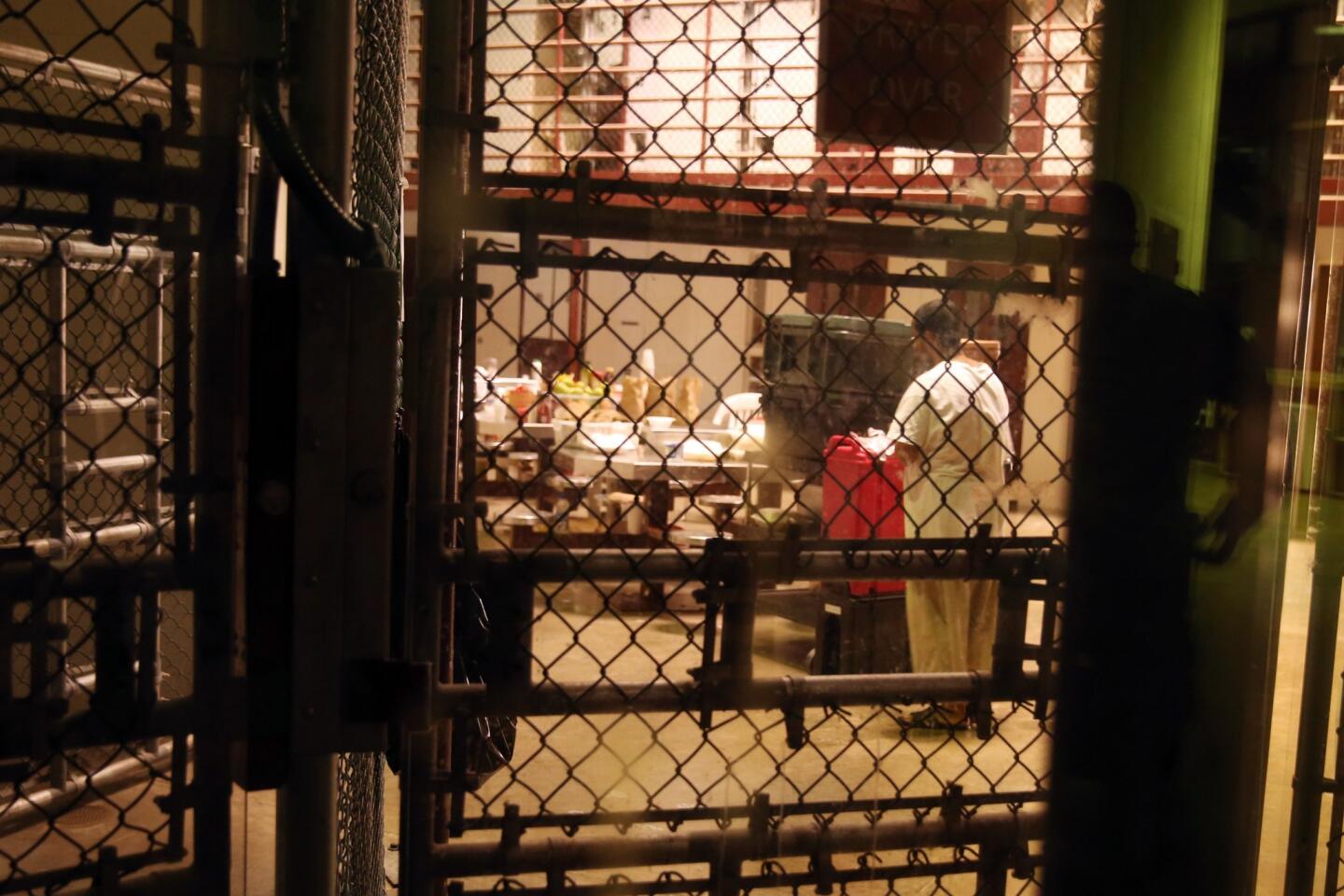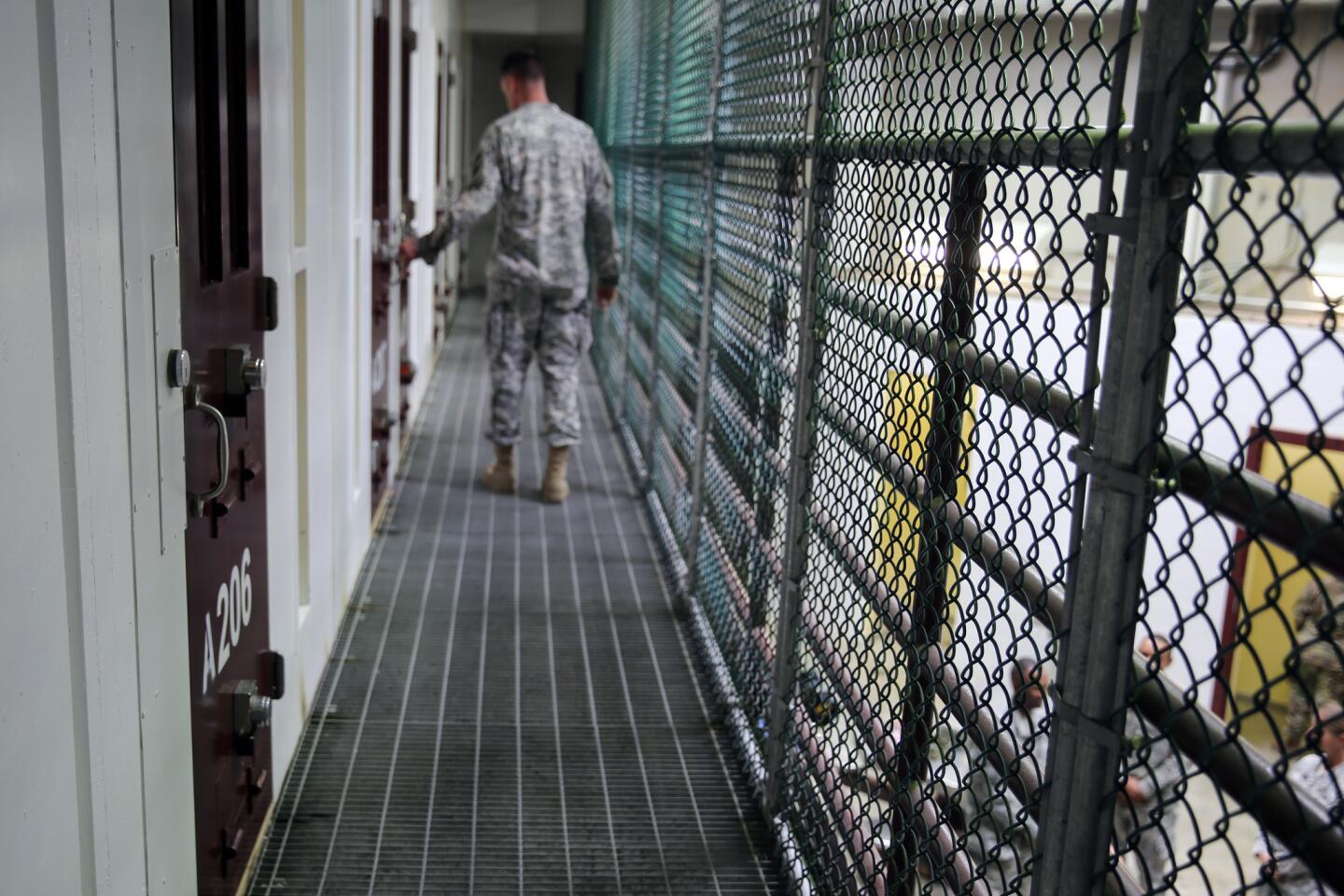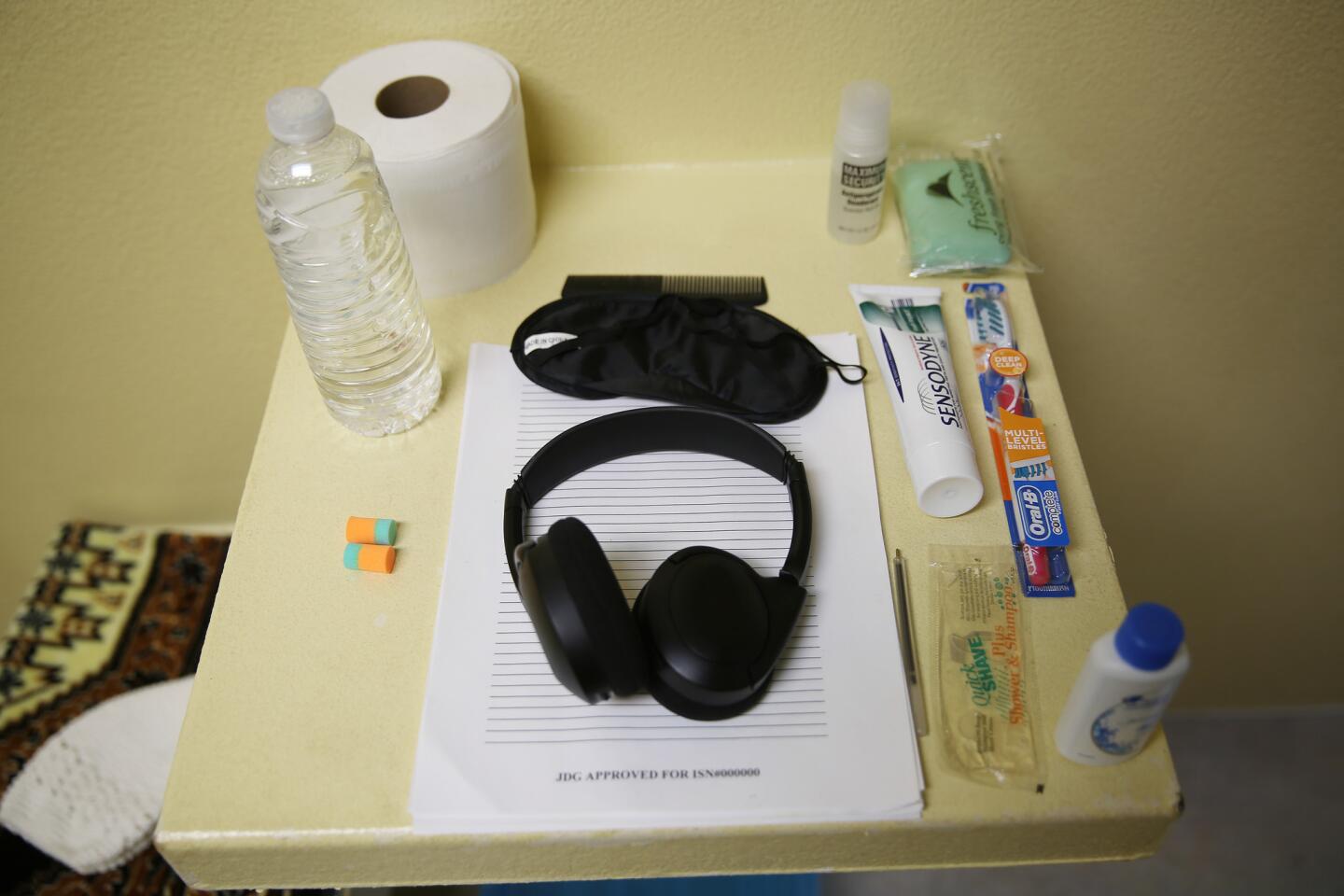Obama gives Congress plan to close Guantanamo Bay prison
President Obama, hoping to finally meet his 2008 campaign pledge, sent Congress a plan Tuesday to close the Guantanamo Bay prison and transfer up to 60 terrorism suspects to a yet unnamed U.S. prison.
The GOP-led Congress has been strongly opposed to closing the controversial prison at the U.S. Navy station in Cuba, and it’s unlikely that the White House proposal will gain much traction in an election year.
Standing beside Defense Secretary Ashton Carter, Obama made an impassioned pitch for the plan in an address Tuesday morning at the White House.
Join the conversation on Facebook >>
“If it were easy, it would have happened years ago, as I wanted,” Obama said.”But there remains bipartisan support for closing it. Given the stakes involved for our security, this plan deserves a fair hearing even in an election year.”
Obama said federal courts have successfully prosecuted, convicted and imprisoned hundreds of people for terrorism-related crimes, including two who sought to bring down U.S. passenger planes, and Dzhokhar Tsarnaev, who bombed the Boston Marathon.
“Keeping this facility open is contrary to our values,” Obama said. “It undermines our standing in the world. It is viewed as a stain on our broader record of upholding the highest standards of rule of law.”
Sen. John McCain (R-Ariz.), chairman of the Senate Armed Services Committee and a former POW during the Vietnam War, said his committee would hold hearings on the proposal.
But McCain, who has publicly called for closing the camp, sharply criticized Obama’s plan Tuesday.
“What we received today is a vague menu of options, not a credible plan for closing Guantanamo, let alone a coherent policy to deal with future terrorist detainees,” he said.
Obama has “yet to say how and where he will house both current and future detainees,” McCain added. “Rather than identify specific answers to those difficult questions, the president has essentially passed the buck to Congress.”
Amnesty International and the Center for Constitutional Rights, which has successfully represented Guantanamo Bay prisoners in two Supreme Court cases, also criticized the plan as inadequate.
“Unless the Obama administration shows real will and dramatically steps up its efforts on these basic fronts, men whose detentions the administration itself has determined are unnecessary, who have already been imprisoned for 14 years, will continue to languish long after President Obama has left the White House,” the center said in a statement.
The military is holding 91 detainees at the camp, which was built after the attacks of Sept. 11, 2001, down from a peak of 684 in 2003. Those not shifted to a U.S. prison would be repatriated abroad.
The plan cites 13 possible transfer sites in the U.S., including seven federal prisons in Colorado, South Carolina and Kansas, as well as six on military bases. It doesn’t recommend a single site, however.
A Pentagon team last year assessed the U.S. Disciplinary Barracks and Midwest Joint Regional Corrections Facility at Leavenworth, Kan.; the Consolidated Naval Brig, Charleston, S.C.; the Federal Correctional Complex, which includes the medium, maximum and supermax facilities in Florence, Colo.; and the Colorado State Penitentiary II, also known as the Centennial Correctional Facility, in Canon City.
Obama sought to close the prison as one his first acts as president in 2009, but quickly ran into strong resistance in Congress and from some states. His new plan, in his final year in office, is his last chance to make good on his campaign promise.
Congressional leaders showed no signs of being willing to change the federal law that forbids any effort to transfer the detainees to the United States.
The plan focuses on potential cost savings, arguing that closing the prison would save $65 million to $85 million a year. It estimated the one-time cost of transitioning to a U.S. facility would be $290 million to $475 million.
The Pentagon estimated that moving the detainees would save at least $335 million over 10 years, and up to $1.7 billion over 20 years.
The figures are approximate because Congress did not authorize a full engineering analysis of facilities that would need to be updated to hold the detainees, according to administration officials who briefed reporters on condition they not be identified.
More detailed spending figures, which are considered classified, will be provided to Congress, they said.
Rep. Mac Thornberry (R-Texas), chairman of House Armed Services Committee, sent a letter to Obama warning that Congress has made clear what details must be included in any plan and that anything less than that would be unacceptable.
According to the officials, the U.S. facilities would cost between $265 million and $305 million to operate each year. The annual operating cost for Guantanamo is $445 million, but the officials said the Cuba detention center will need about $225 million in repairs and construction costs if it continues to be used.
The administration has tried to get Republicans on board by arguing that the prison is too expensive, saying it costs more than $3 million per prisoner per year to keep Guantanamo open.
Nevertheless, opponents made clear they will continue to oppose the president’s plan.
“The president is doubling down on a dangerous plan to close Guantanamo -- a move that I will continue to fight in the Senate,” Sen. Kelly Ayotte (R-N.H.) said in a statement. “While the administration asserts that transferring detainees and closing Guantanamo is in America’s national security interests, they refuse to level with the American people regarding the terrorist activities and affiliations of the detainees who remain at Guantanamo.”
The Pentagon spent months assembling the plan to meet a Feb. 23 deadline to submit a proposal to lawmakers.
When it became public that the assessment teams were visiting potential transfer sites, GOP lawmakers in those states reacted angrily.
“Regardless of whether it is Kansas, South Carolina, or Colorado, none of these options are acceptable,” U.S. Sens. Pat Roberts (R-Kan.), Tim Scott (R-S.C.) and Cory Gardner (R-Colo.) said a joint statement before the plan was released.
“Our states and our communities remain opposed to moving the world’s deadliest terrorists to U.S. soil. The terrorists at Guantanamo Bay are where they should remain -- at Guantanamo Bay.”
There are now 35 prisoners who have never been charged with a crime and have been approved by U.S. military and intelligence officials for repatriation or transfer abroad.
A small number of high-value prisoners, such as Khalid Shaikh Mohammed and four other alleged 9/11 plotters, would presumably remain at Guantanamo Bay until they are tried by military tribunals there. Mohammed’s case is going through the tribunal process.
Just eight men were tried and convicted of war crimes, and only three of those are still serving time at the detention facility.
Guantanamo has held 780 terrorism suspects since it opened in 2002, and 678 have been released or transferred to the custody of other nations. Obama has reduced the population from 241 during his time in office.
Follow @wjhenn for military and defense information.
ALSO
Senate should act on Supreme Court nominee, majority says
The four big questions ahead of Nevada’s Republican caucuses
Kalamazoo Uber driver admits he ‘took people’s lives,’ police say
More to Read
Sign up for Essential California
The most important California stories and recommendations in your inbox every morning.
You may occasionally receive promotional content from the Los Angeles Times.




















